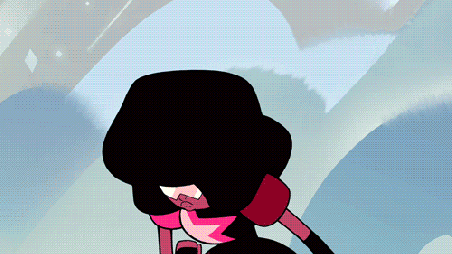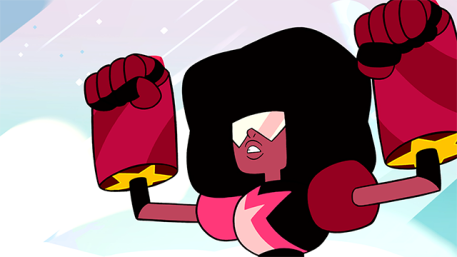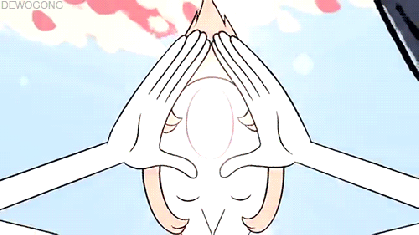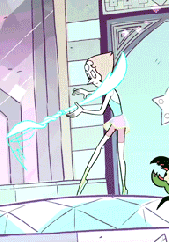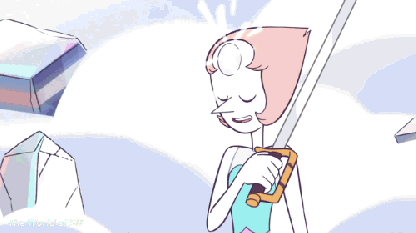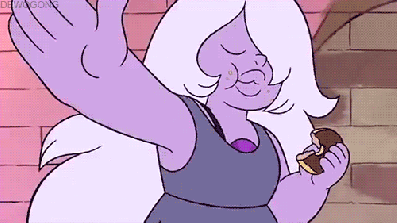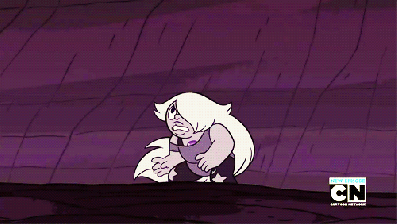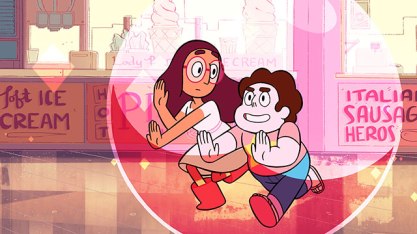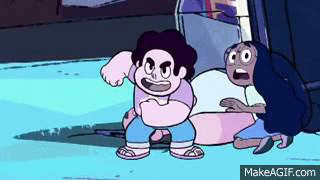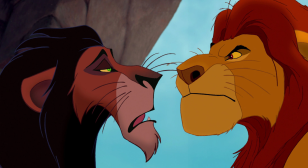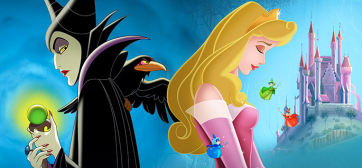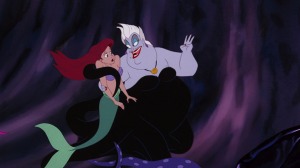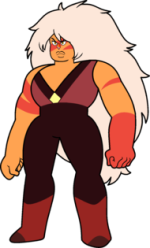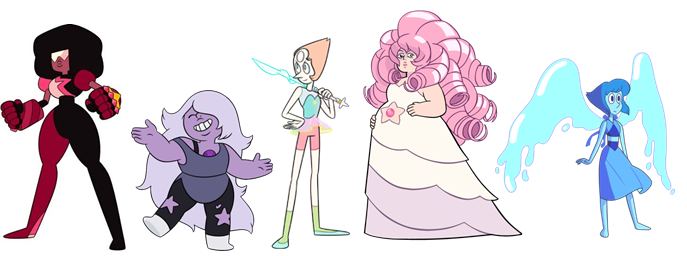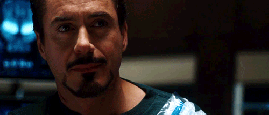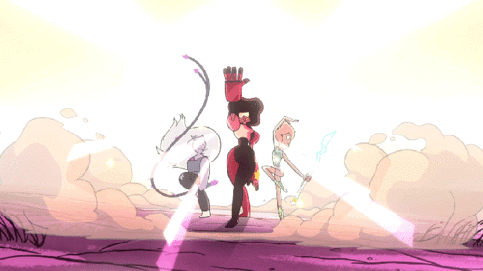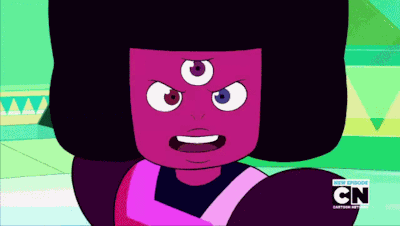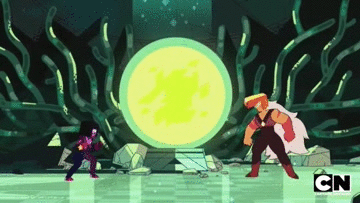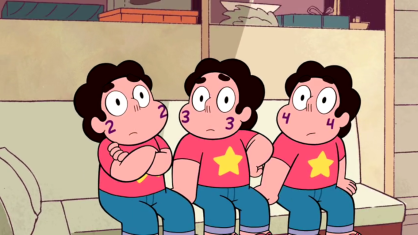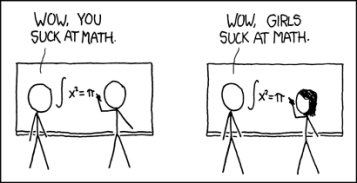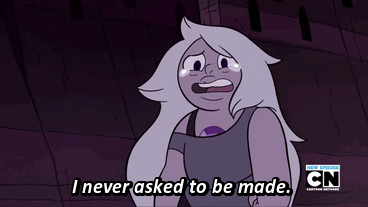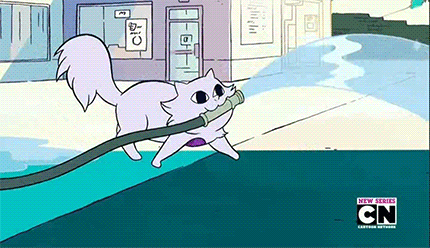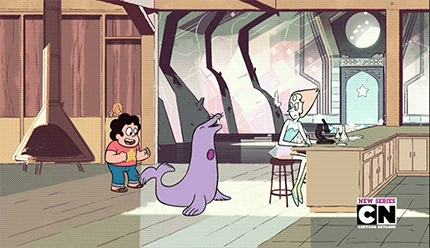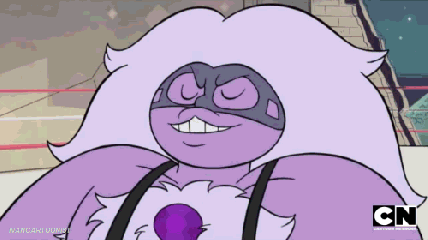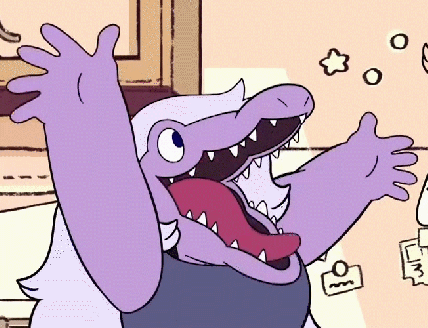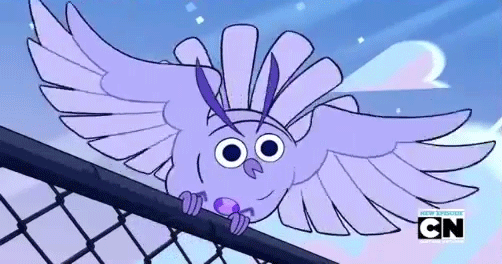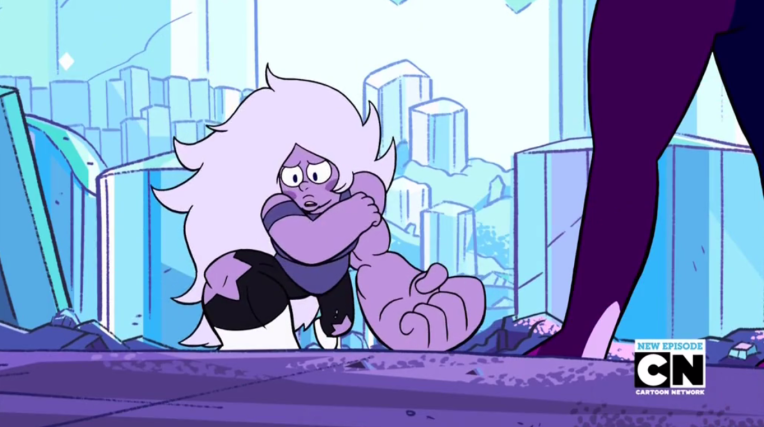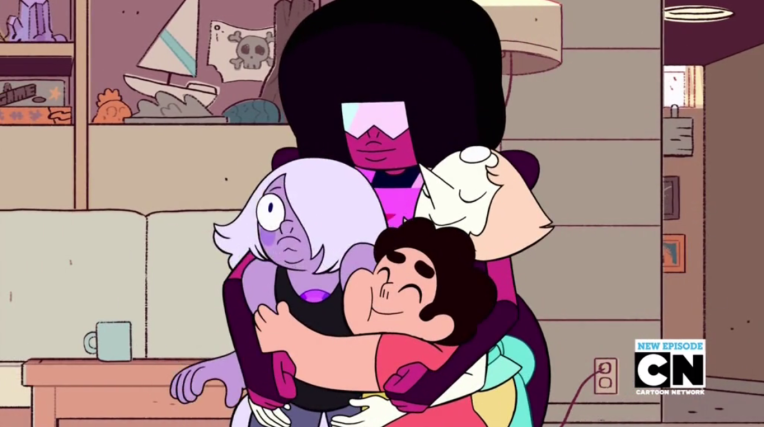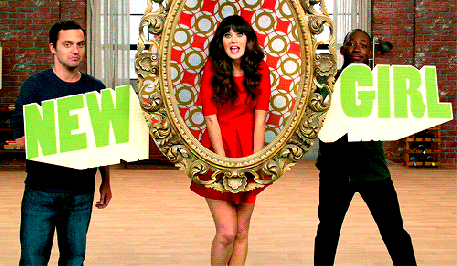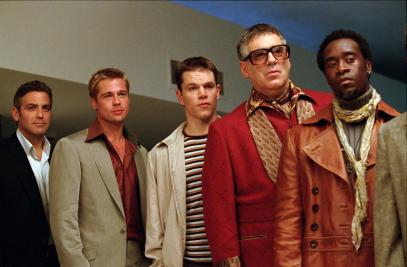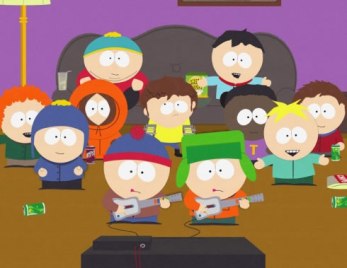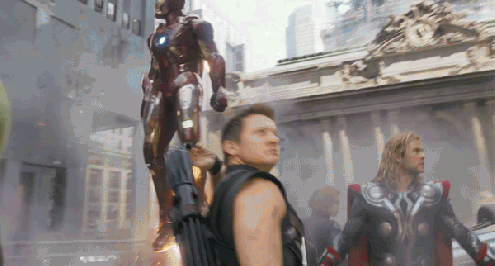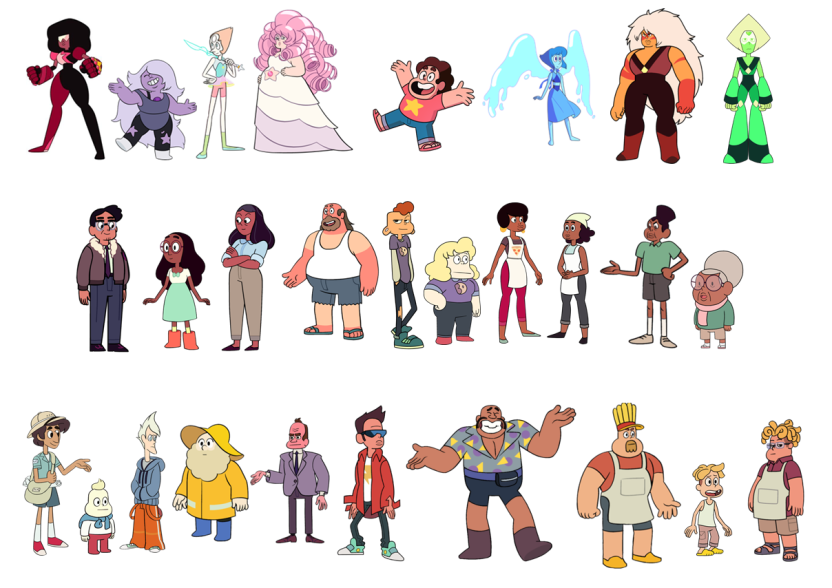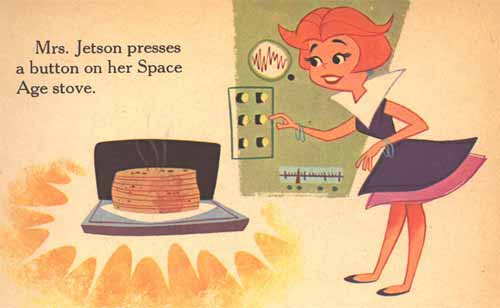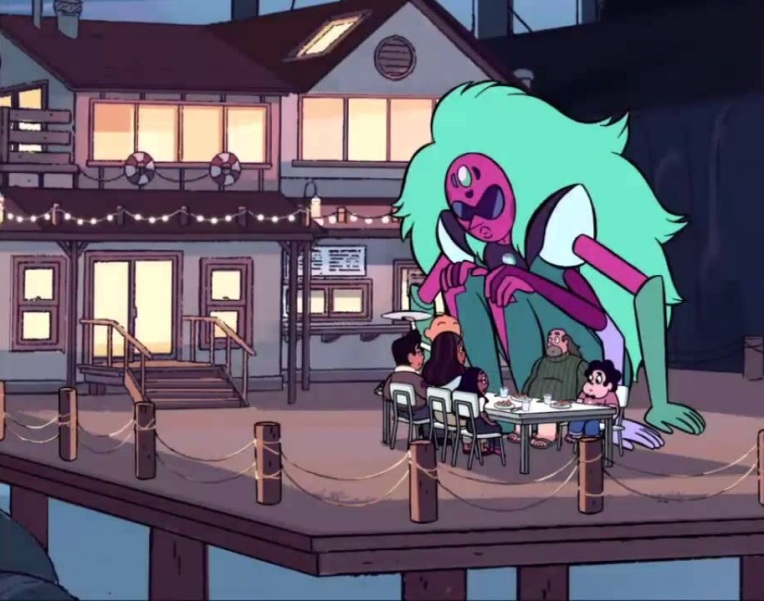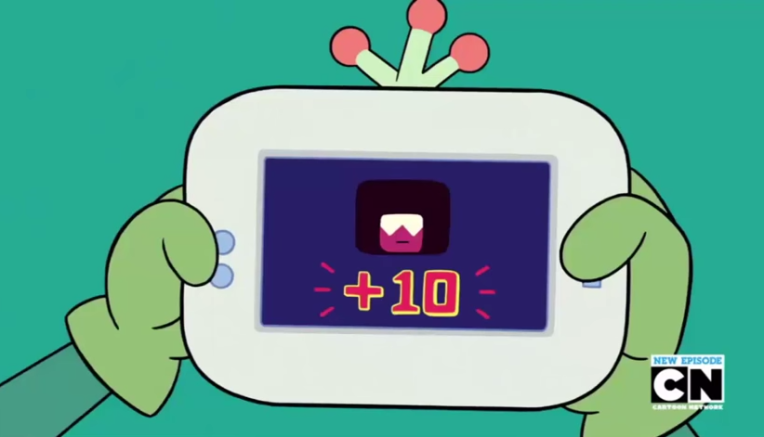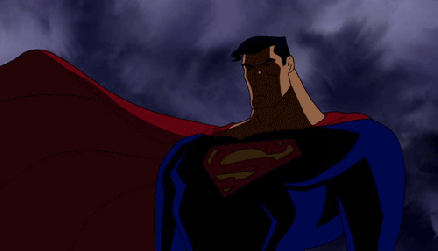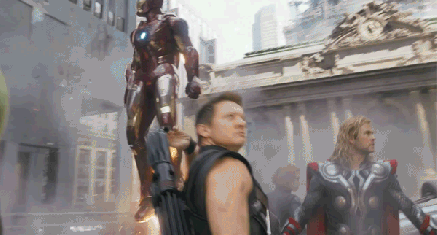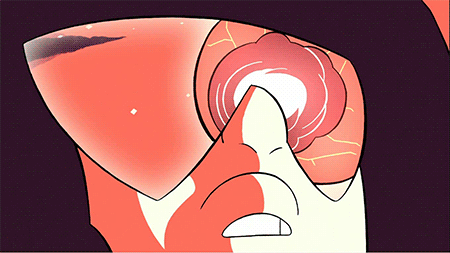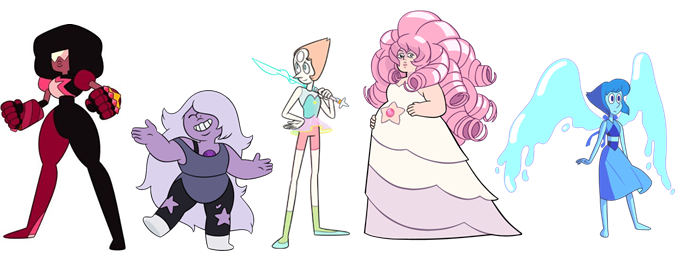In a previous post, I explained what symbolism is, and how the contrast between light and dark is one of the most common symbols used in visual stories (so common you might even call it a trope… but I digress). However, Steven Universe doesn’t really seem to use this symbol.
Instead, there are much more complex and interesting symbols that the show does use. For example, the weapons that the Crystal Gems wield: each one seems to symbolize and represent their owner in different ways.
First off, there’s Garnet, whose signature weapon takes the form of two huge gauntlets. The most obvious way in which the gauntlets serve as a symbol for Garnet herself is through shape: they’re square when she makes a fist, mimicking her enormous square afro (also, the word ‘gauntlet’ sounds like the word ‘Garnet,’ but that was probably unintentional). More than that, however, the gauntlets are a symbol for her personality: Garnet is a Gem of few words, so when she opens her mouth her statements are very direct – no beating around the bush. In a similar vein, her gauntlets (unlike Pearl’s spear or Amethyst’s whip) don’t give her much distance between herself and her enemy – they’re not a weapon she can use from far away, so she has to get straight to the point. Garnet’s blows, just like her words, are a direct hit.
Pearl, on the other hand, primarily uses a spear. Again, the spear acts as a physical symbol – it is tall and thin, just like Pearl – as well as a personal one. For one thing, Pearl pulls her spear out of her forehead, which is symbolic of her intellectual personality. In addition, aiming and throwing a spear take careful aim, concentration, and planning, which are definitely strengths that Pearl has over the other Crystal Gems. She’s pragmatic almost to a fault, and her weapon reflects that. In addition, Pearl has been known to fight with a sword, which is another long, thin weapon that requires a lot of grace and strategy to wield. It comes as no surprise, then, that Pearl is the most graceful of the Crystal Gems. Just look at her twirl!
In contrast, Amethyst uses a double-headed whip as her signature weapon. Physical symbolism plays a role here as well, because the whip isn’t rigid like the other weapons – rather, it curves as it flies through the air, mimicking Amethyst’s curvy body type. Whips are also known to be incredibly fast (just think of the term ‘whiplash’), which represents Amethyst’s impulsive nature. She’s always one to launch herself head-on into battle without thinking about the consequences, which is symbolized by her speeding weapon. Amethyst is also known for her sense of humor and her sarcasm, which can be described as ‘biting’ or ‘stinging’ wit. What else stings? The slash of a whip, of course. Thus, Amethyst’s whip acts as a symbol of both her physical appearance and her hasty, at times stinging, personality.
Last but not least, there’s Steven, whose weapons are a shield and a large protective bubble. Physical symbolism is a little less prominent, though both weapons are circular which may mimic Steven’s round features. What’s more obvious is the personal symbolism: both weapons are protective, which reflects Steven’s caring personality. He sympathizes with almost everybody, and his most pressing concerns are usually to make sure that the people around him aren’t hurt. For example, in “Rose’s Fountain” he admitted to crying about snakes because “they don’t have arms,” and in “Reformed,” the first thing he asked Amethyst when she reincarnated in an asymmetrical body was, “Does that new form hurt you?” He wants to ensure safety, and his weapons symbolize his compassion.
It’s safe to say, then, that each weapon serves as a symbol for its owner. Why is this important? Well, it lends a deeper meaning to each weapon. These weapons aren’t senseless killing machines, rather, each one has a personal connection to the person who wields it. This implies that the Crystal Gems also have a deeply emotional connection with the cause behind their weapons – that of protecting the Planet Earth.
In addition, weapons also serve as a symbol for agency, or the power that each character has to shape their own fate. Weapons reflect on the people who wield them, and too often for female characters in science fiction, the heroine’s greatest weapon is reduced to be her sex appeal. No matter how many fancy gadgets she may have, attributing her success to her sexual attractiveness is objectifying – that is, it turns a complex, human character into just a body to oggle at. Therefore, Steven Universe makes obvious strides: the Gems are not sexualized, and their weapons forge a deeply personal connection between their personalities and their power. Garnet, Amethyst, Pearl, and Steven do not need to rely on sex appeal to have agency; rather, their own unique strengths, which are represented by and channeled through their weapons, are they keys to their success!
I’ve only profiled the weapons of these four Crystal Gems, but the same probably goes for Jasper, Peridot, and Lapis Lazuli as well. So next time you’re watching an episode like “The Return” or “Jail Break,” as yourself this: how do the Gems’ weapons or special abilities symbolize aspects of their personalities?
***
Background Sources:
Bing, J. (2002, June 3). Cutback in femme credits.(number of female movie directors and writers in Hollywood drops)(Brief Article)(Panel Discussion)(Statistical Data Included). Daily Variety, 4-4.


